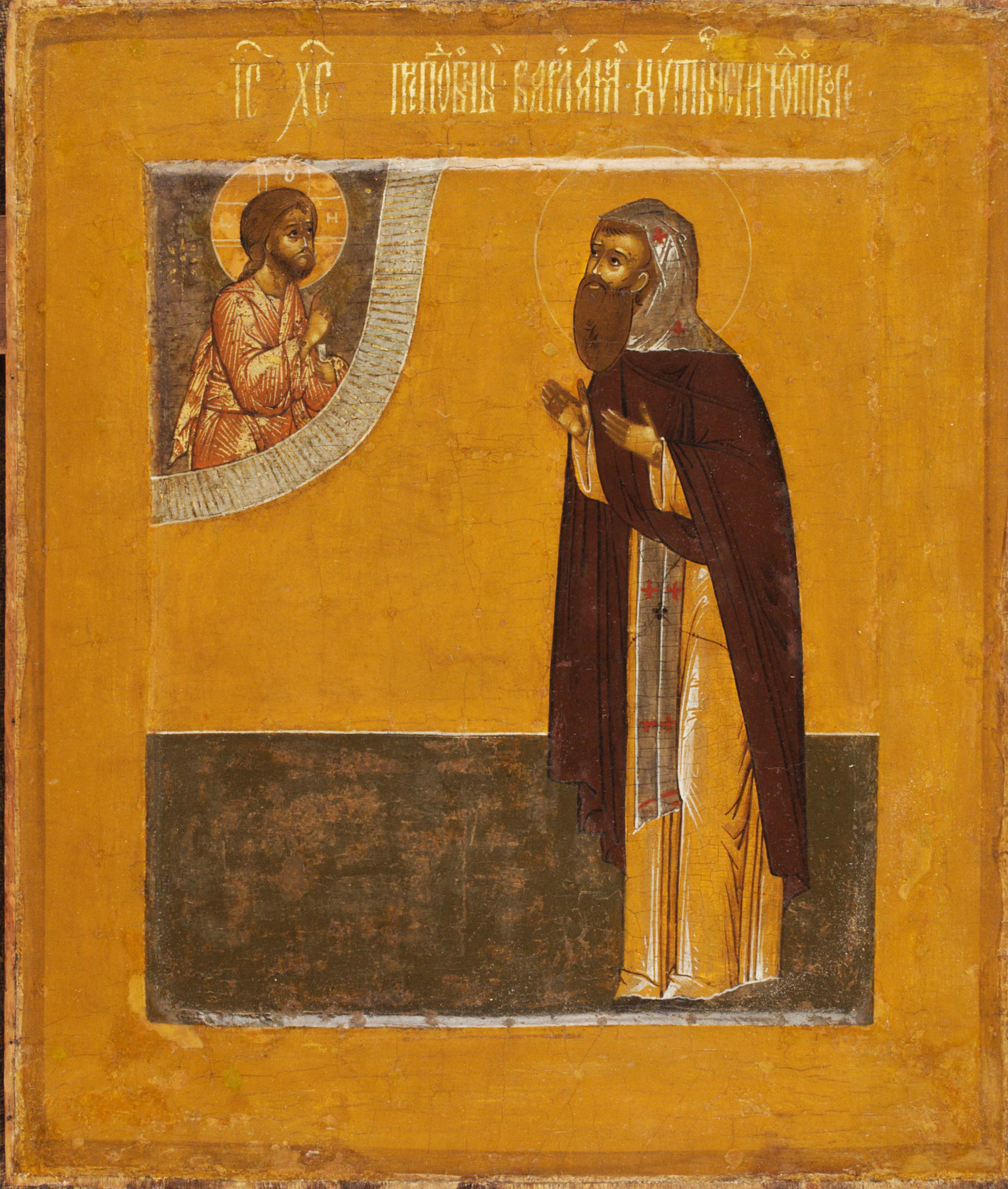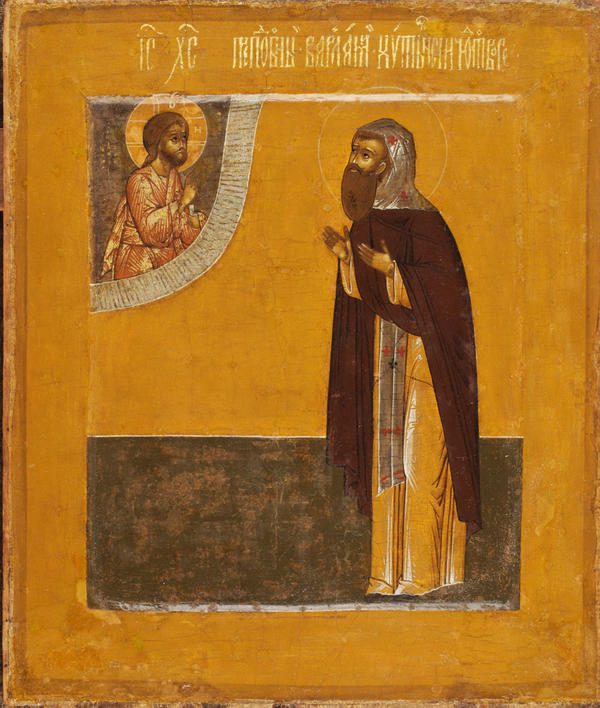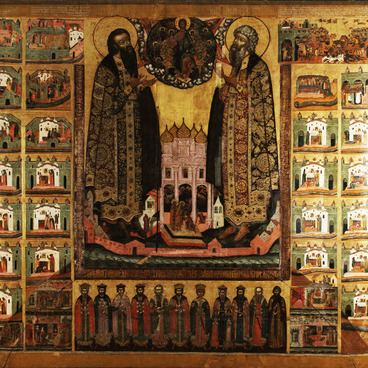The icon depicts Varlaam of Khutyn, a Novgorod saint who lived in the 12th century. Venerable Varlaam is presented in monastic vestments; he prays before the image of Jesus Christ.
Varlaam of Khutyn
Время создания
First third of the 17th century
Размер
31,5x27 cm
Техника
Tempera
Коллекция
Выставка
1
Открыть в приложении#1
Unknown author
Varlaam of Khutyn
#6
#7
The colour scheme of the icon is restrained; the ochrish colour prevails: a single tone is used to paint the raised borders of the icon panel, the background, the haloes and faces, the robe of the saint. For the garments of Christ and Varlaam, different shades of brown were used. Also, the artist utilized the colour olive, reduced to different extents. The composition of the image is also laconic: the artist did not decorate the image, did not ornate the background or add minor characters, for example, angels to the main ones. The icon depicts only Jesus Christ and St. Varlaam standing on a conditional surface.
#8
In the 15th century, the saint was especially revered in Novgorod; the veneration of Varlaam of Khutyn spread throughout Russia a century later. The icon displayed at the exhibition was in the iconostasis of the Yaroslavl Church of Elijah the Prophet. The construction of the church in the middle of the 17th century was commissioned and financed by Skripin brothers, the merchants, who presumably came from Novgorod. The brothers especially loved northern Russian shrines.
The hagiography of Varlaam of Khutyn says that he was born Alexis Michalevich to a pious family in Novgorod and took monastic tonsure in his youth. Later he retired to a secluded place near Novgorod – Khutyn – and lived as a hermit: he observed strict fasting and prayed a lot. Soon, people learned about his righteous life and began to come to Varlaam for advice. In 1192, the hermit founded the Transfiguration Monastery in the village of Khutyn.
#9
The saint’s hagiography tells about the lifetime and posthumous miracles that are associated with his name. One of the most famous is The Vision of the Sexton Tarasy. According to the legend, St. Varlaam ordered him to rise to the top of the church, and from there Tarasy saw Lake Ilmen that loomed over Novgorod and was ready to flood the city. Also the sexton saw a cloud of fire and angels — they were shooting burning arrows at Novgorodians. Varlaam explained the vision to Tarasy: the Lord wanted to flood the city because its inhabitants sinned, lied and violated justice, but thanks to the prayers of the Virgin, He spared it. Instead of a flood as a punishment for sins, He would send pestilence, and three years later — a fire. The legend aligned with the real calamities that befell Novgorod at the beginning of the 16th century – a pestilence and a devastating fire.
#10
Yaroslavl Museum Reserve
читать дальшескрыть
00:00
00:00
1x
Varlaam of Khutyn
Время создания
First third of the 17th century
Размер
31,5x27 cm
Техника
Tempera
Коллекция
Выставка
1
Открыть в приложении
Поделиться



